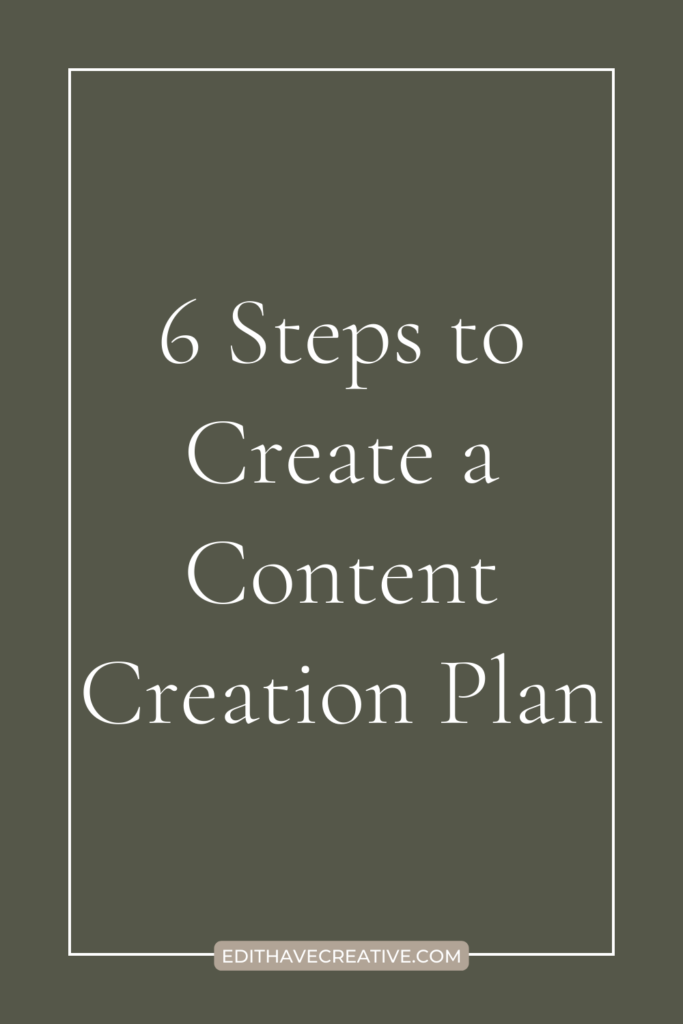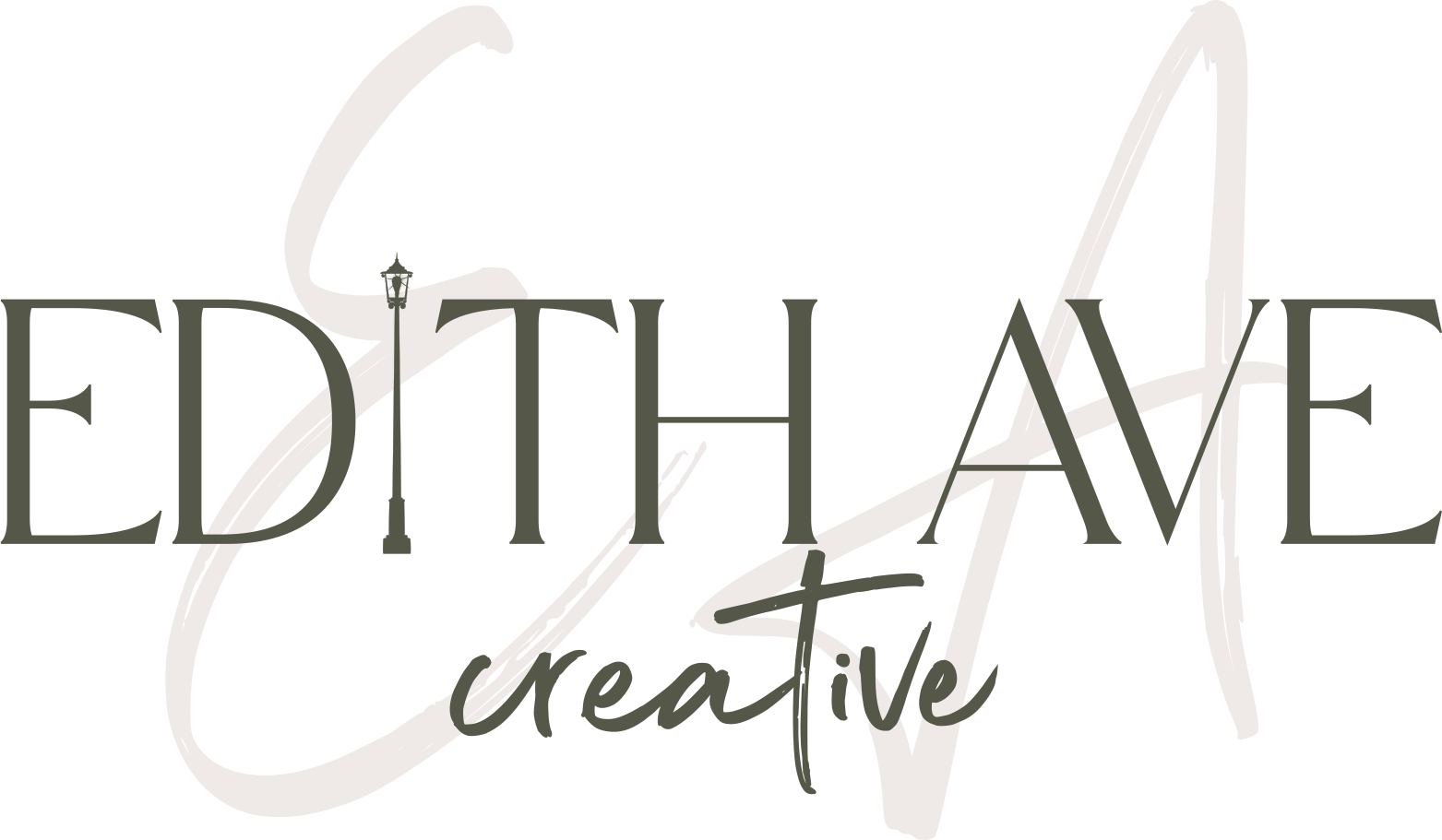When I say the words “content creation,” is your initial reaction to be excited or do you immediately feel a dark cloud of doom over your head? As small business owners, we all probably know on some level that content creation is a vital part of our businesses in today’s digital world, but it’s often something that is hard to start or maintain.
I’m going to give a behind-the-scenes look at my content creation plan and why I had to ditch some and combine some popular pieces of advice for creating a content creation plan.
First, let’s highlight that you need a content creation strategy. A content creation strategy is key to having a successful content creation plan. Those terms are often used interchangeably, but they’re actually two different principles.
Your content creation strategy outlines your content goals, target audience, and the tactics you’ll use to connect with them. A solid strategy helps you navigate the vast content world with purpose and ensures that every piece you create serves a meaningful role in achieving your objectives.
Your content creation plan is the organization system you use to ensure every piece of created content is aligned with your strategy. This allows you to know what you need to be working on at any time.
Step 1: Identify your content pillars
Have you heard of the term content pillars before this? Content pillars are the main themes or topics that anchor your content. These pillars represent the key areas of expertise or interest that are central to your brand, allowing you to consistently create content that resonates with your target audience. Content pillars serve as a guiding framework, ensuring that your content remains focused, relevant, and aligned with your brand’s identity.
By defining and consistently producing content around these 3-5 pillars, you can build a stronger online presence, enhance brand recognition, and provide valuable insights and information to your audience. So how do you identify the content pillars for your business?
There may be some pillar ideas that immediately jump into your head. For example, when starting to plan out my content pillars, I knew my goal was to share about general business organization and setting up processes. I also had a lot of design-related topics.
Writing down content ideas is a great way to accomplish two things. 1. You’re creating content ideas! 2. You can start looking at topic trends. Maybe you initially think you have a lot of ideas to share about a topic, but your list reflects a whole different focus.
Above all, remember that the point of creating the content is to answer questions your ideal client is asking. The benefit of the content is for them— not you (directly).
Step 2: Brainstorm content ideas
Grab a piece of paper or open up a document on your computer and write down every content idea you can in 10 minutes. Don’t filter it. Don’t organize it (yet). You can put your content pillars on the paper as headings and write the ideas under them, but that’s as much organization as we need right now. The goal is a giant brain dump.
…. or maybe it’s not a giant brain dump. Maybe you can come up with a few ideas under each pillar. That’s ok. Right now we really just need somewhere to start.
Step 3: Write master outlines
This is my secret to having a constant source of content ideas. I start by writing a giant outline for each of my topics as if I was going to write a school paper that 10+ pages long about each topic. What I’ve found when I start with an outline is that I often realize that the one topic I started with can actually be divided into multiple pieces of content. It also gives me a loose framework when I am ready to start writing.
Writing these master outlines is also a great way to batch work, because you can take 10 minutes per idea to write an outline and usually end up outlining multiple posts in that time. If I take one idea per content pillar and spend 10 minutes outlining each idea, I usually end up with outlines for 6-9 pieces of content within 30 minutes!
Step 4: Schedule from the top down
“If you talk about it, it’s a dream; if you envision it, it’s possible; but if you schedule it, it’s real.”
– Tony Robbins
Start with your longest form of content (blog posts) and actually put a calendar date on each of them. You’re not locked into these dates if things need to shift around, but psychologically when we see a date on a task we have an easier time making the time to actually do it. It’s also good to visualize if there are posts that would make more sense in a specific order.
Recently I started outlining a post idea, then realized that it would be a book if I covered every topic on my outline. I still want to do it as a post, but now I have several “sub-topic posts” scheduled in front of it so I can link back to them for more in-depth coverage of those areas.
Blog posts can take a big chunk of time to write, but once you have them written (even just outlined) it helps to drive other types of short-form content. Once I know my blog post schedule, I can start creating posts for Instagram and other “short-form” content based on that week’s blog post. This usually means I’m only having to come up with 1-2 actual content ideas for those short-form platforms.
Step 5: Stay ahead of the game
In college I had a strategy that got me some weird looks during “syllabus week” but always worked in my favor by the time the first exam rolled around. It was simple. I stayed two weeks ahead on almost all assignments. I took this practice with me to the corporate world and still use it as an entrepreneur. The idea behind staying two (+) weeks ahead is two-fold.
- Life happens. You get sick. Kids get sick. A client project needs extra attention. An awesome opportunity comes and you so want to say yes, but don’t want other areas of your business to suffer. Buffers help.
- I don’t like the pressure of finishing content the night before it’s “due.” Some people work best with that pressure (if that’s you, feel free to skip this step) but it allows me to feel better about the content that I’m sharing if I know I have time to research a little extra where needed or edit to get a phrase just right. The posts where I’m writing them as I need them usually feel rushed and I’m not as happy with how they turn out.
My process is to plan out my blog posts at least a month ahead. Then I try to make sure there’s always 1-2 already scheduled, 2-3 “in progress”, and the next month’s content “on deck.” I take an evening to make sure I have outlines for the next month’s blog posts, then can be ready to sit down and write the posts a couple weeks ahead of when they’re scheduled.
Step 6: Give yourself some grace and flexibility
It’s ok to have a loose social media posting schedule, but don’t feel like you can only post about industry tips on Tuesdays because of the hashtag. Once you start creating content, you’ll find that some posts would have multiple content types (like quote, behind the scenes, blog highlight, product highlight, etc.) Organically bringing up your work helps your audience connect better with you.
Creating a content creation plan supports your strategy and business goals. It allows you to know what you’re working on when you sit down at your desk (or on your couch) on your content creation days. Having an ever growing list of ideas allows you the freedom to create what you’re feeling passionate about in that moment.
Do you have any tips that have worked for your content creation plan? I’d love to hear them!
Action items:








